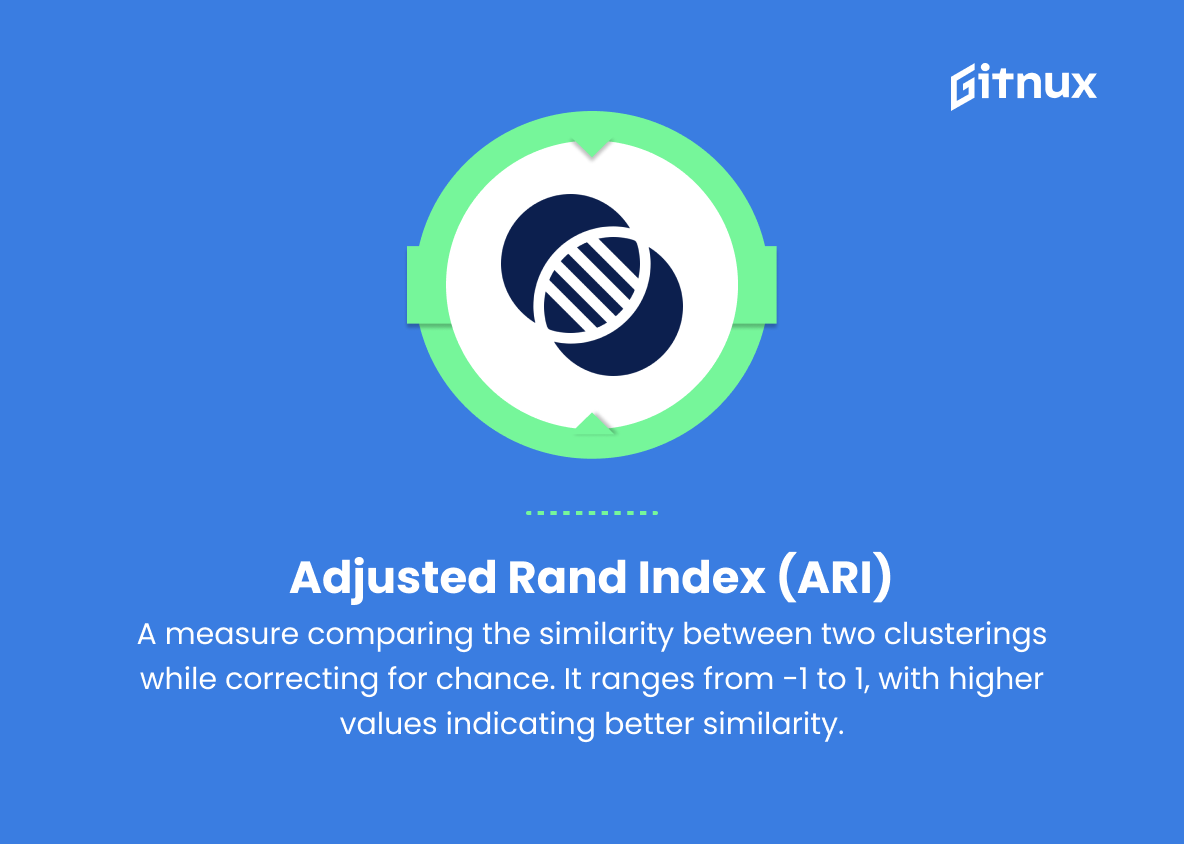In today’s data-driven world, machine learning has emerged as a powerful tool that has revolutionized various industries, from healthcare and finance to retail and technology. As more and more organizations continue to adopt machine learning models for decision-making processes, it is imperative to accurately evaluate their performance and efficiency. In this blog post, we will delve into the fundamental aspect of understanding machine learning metrics, exploring their importance and how they can effectively be implemented to enhance the capabilities of your models. Join us as we break down various evaluation techniques, discuss key metrics for classification, regression and unsupervised learning, and guide you through selecting the most appropriate metrics for your specific machine learning applications.
Machine Learning Metrics You Should Know
1. Accuracy
The proportion of correctly classified instances out of the total instances. It’s helpful when the target class is well-balanced but can be misleading when there’s class imbalance.
2. Precision
The proportion of true positive instances out of the instances classified as positive. This is helpful when the cost of false positives is high.
3. Recall (Sensitivity)
The proportion of true positive instances out of the actual positive instances. It’s helpful when the cost of false negatives is high.
4. F1 Score
The harmonic mean of precision and recall. Useful when there’s class imbalance and a balance between precision and recall is desired.
5. Area Under ROC Curve (AUC-ROC)
A plot of true positive rate (recall) vs. false positive rate (1 – specificity) that measures the classifier’s ability to discriminate between classes. Higher AUC-ROC indicates better classifier performance.
6. Log Loss
The logarithm of the likelihood of the true labels given the probability predictions. Lower log loss values indicate better performance.
7. Mean Absolute Error (MAE)
The average absolute difference between the actual and predicted values for regression tasks. Lower MAE values indicate better performance.
8. Mean Squared Error (MSE)
The average squared difference between the actual and predicted values for regression tasks. Lower MSE values indicate better performance.
9. Root Mean Squared Error (RMSE)
The square root of the MSE, giving an error value in the same unit as the target variable. Lower RMSE values indicate better performance.
10. R-squared
The proportion of variance in the dependent variable that is predictable from the independent variables. Higher R-squared values indicate better performance.
11. Confusion Matrix
A table showing the number of true positives, true negatives, false positives, and false negatives for a classification problem. It helps analyze the performance of a classifier.
12. Matthew’s Correlation Coefficient (MCC)
A balanced measure of performance for binary classification problems, taking into account all four confusion matrix values. It ranges from -1 to 1, with -1 being the worst performance, 1 being the best, and 0 indicating random predictions.
13. Hamming Loss
The fraction of labels that are incorrectly predicted for a set of instances. Lower values indicate better performance.
14. Jaccard Index
The ratio of the size of the intersection of the predicted and actual labels to the size of the union of the predicted and actual labels. Higher values indicate better performance.
15. Adjusted Rand Index (ARI)
A measure comparing the similarity between two clusterings while correcting for chance. It ranges from -1 to 1, with higher values indicating better similarity.
16. Silhouette Score
A measure of how well an instance is clustered with its own group compared to other groups. It ranges from -1 to 1, with higher values indicating better cluster assignments.
17. Mean IoU (Intersection over Union)
Used for semantic segmentation tasks, Mean IoU measures the average intersection over union between the predicted segmentation and the ground truth. Higher values indicate better performance.
18. BLEU Score
An evaluation metric for machine translation that measures how well the generated sentences match reference sentences. Higher values of BLEU scores indicate better performance.
19. Perplexity
A measure of how well a probability model predicts a sample, commonly used to evaluate language models. Lower perplexity values indicate a better fit of the model to the data.
Machine Learning Metrics Explained
Machine Learning metrics evaluate algorithm and model performance for real-world problem-solving. Accuracy quantifies correct predictions but is misleading with class imbalance. Precision and Recall minimize false positives and false negatives, respectively, while F1 Score balances both. AUC-ROC assesses discriminative abilities, and Log Loss measures uncertainty. MAE, MSE, and RMSE quantify prediction deviation in regression, while R-squared measures predictability. Confusion matrix and MCC represent classifier performance, and Hamming Loss identifies mispredictions. Jaccard Index indicates label similarity, ARI and Silhouette Score evaluate clustering, and Mean IoU is for semantic segmentation. BLEU Score and Perplexity assess NLP models. These metrics help gauge efficiency, reliability, and usability across diverse ML applications.
Conclusion
In conclusion, machine learning metrics play a pivotal role in guiding the development and success of machine learning models. By carefully selecting appropriate evaluation metrics, data scientists and engineers can ensure that their algorithms are performing optimally and addressing the desired business or research goals. As machine learning applications continue to grow in diversity and complexity, staying well-versed in both existing and emerging metrics will be essential for professionals involved in this rapidly evolving field. By fostering a deep understanding of these metrics, we can continue to develop high-performing models that meaningfully contribute to the progress of technology, improve decision-making, and ultimately, enhance the quality of life for all.















